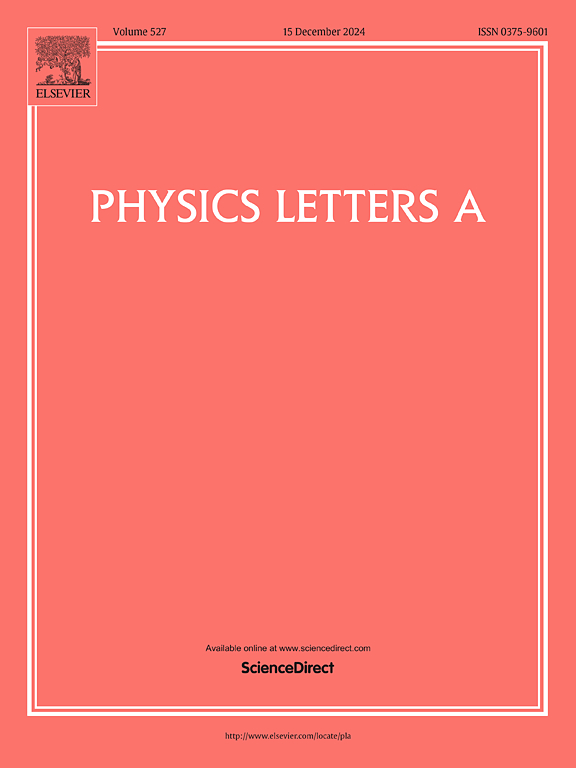Dynamic evolution of quantum Fisher and skew information under decoherence in three-qubit X-states
IF 2.3
3区 物理与天体物理
Q2 PHYSICS, MULTIDISCIPLINARY
引用次数: 0
Abstract
Quantum metrology leverages quantum effects such as squeezing, entanglement, and other quantum correlations to boost precision in parameter estimation by saturating the quantum Cramér-Rao bound, which can be achieved by optimizing quantum Fisher information (QFI) or Wigner-Yanase skew information (SI). QFI evaluates the sensitivity of a quantum state to infinitesimal variations in a parameter, determining the maximum precision of its estimate. In contrast, SI measures the non-commutativity between a quantum state and an observable, illustrating the perturbative effect of that measurement. This work provides analytical expressions for quantum Fisher and skew information in a general three-qubit X-state and examines their evolution under phase damping, depolarization, and phase-flip decoherence channels. To illustrate the validity of our method, we investigate their dynamics for a three-qubit Greenberger-Horne-Zeilinger (GHZ) state subjected to various memoryless decoherence channels. Closed-form expressions for QFI and SI are derived for each channel. By comparing these metrics with the entanglement measure of concurrence, we demonstrate the impact of decoherence on measurement precision for quantum metrology. Our results indicate that phase damping and phase-flip channels generally allow for better parameter estimation compared to depolarization. This study provides insights into the optimal selection of noise channels for enhancing precision in quantum metrological tasks involving multi-qubit entangled states.
三量子位x态退相干下量子Fisher和偏态信息的动态演化
量子计量学利用量子效应,如压缩、纠缠和其他量子相关性,通过饱和量子cram - rao界来提高参数估计的精度,这可以通过优化量子Fisher信息(QFI)或Wigner-Yanase歪斜信息(SI)来实现。QFI评估量子态对参数无穷小变化的敏感性,确定其估计的最大精度。相比之下,SI测量的是量子态和可观测态之间的非交换性,说明了该测量的微扰效应。这项工作提供了一般三量子位x态中量子Fisher和偏态信息的解析表达式,并研究了它们在相位阻尼、去极化和相位翻转退相干信道下的演化。为了说明我们方法的有效性,我们研究了三量子位格林伯格-霍恩-塞林格(GHZ)态在各种无记忆退相干信道下的动力学。为每个通道导出了QFI和SI的封闭表达式。通过将这些度量与并发的纠缠度量进行比较,我们证明了退相干对量子计量测量精度的影响。我们的研究结果表明,与去极化相比,相位阻尼和相位翻转通道通常允许更好的参数估计。该研究为提高涉及多量子比特纠缠态的量子计量任务的精度的噪声通道的最佳选择提供了见解。
本文章由计算机程序翻译,如有差异,请以英文原文为准。
求助全文
约1分钟内获得全文
求助全文
来源期刊

Physics Letters A
物理-物理:综合
CiteScore
5.10
自引率
3.80%
发文量
493
审稿时长
30 days
期刊介绍:
Physics Letters A offers an exciting publication outlet for novel and frontier physics. It encourages the submission of new research on: condensed matter physics, theoretical physics, nonlinear science, statistical physics, mathematical and computational physics, general and cross-disciplinary physics (including foundations), atomic, molecular and cluster physics, plasma and fluid physics, optical physics, biological physics and nanoscience. No articles on High Energy and Nuclear Physics are published in Physics Letters A. The journal''s high standard and wide dissemination ensures a broad readership amongst the physics community. Rapid publication times and flexible length restrictions give Physics Letters A the edge over other journals in the field.
 求助内容:
求助内容: 应助结果提醒方式:
应助结果提醒方式:


